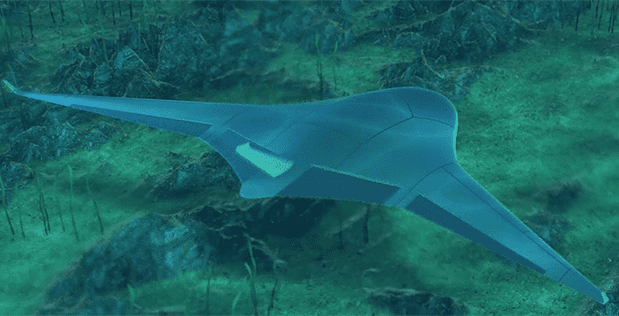
ARLINGTON, Va.—The Defense Advanced Research Projects Agency (DARPA) has executed contract options to continue the Manta Ray project that began in 2020, the agency said in a Feb. 5 release.
The Manta Ray effort seeks to demonstrate innovative technologies allowing payload-capable unmanned underwater vehicles (UUVs) to operate on long-duration, long-range missions in ocean environments. The three prime contractors will be Northrop Grumman Systems Corp., Martin Defense Group LLC (formerly Navatek, LLC), and Metron Inc.
The Manta Ray project seeks to develop UUVs that operate for extended durations without the need for on-site human logistics support or maintenance. It also aims to address critical challenges spanning energy management, UUV reliability, biofouling, corrosion control, navigation, underwater obstacle avoidance, and many other areas that could benefit Navy operations.
“Manta Ray performers have each taken unique approaches to solving the wide range of challenges related to UUV endurance,” said Cmdr. Kyle Woerner, the program manager for Manta Ray. “To me, this is a clear sign we are tackling a complex problem without a clear ‘one size fits all’ solution.”
The Manta Ray program concluded its first major milestone with the completion of preliminary design reviews in early 2021. Later this year, selected performers will advance their designs toward a critical design review that will confirm design maturity before vehicle fabrication and testing in an anticipated Phase 2.
“The goals of this new class of undersea vehicle and its critical component technologies are to inform, as well as transition into, future Navy UUV efforts,” added Woerner.
Two of the selected performers, Northrop Grumman Systems Corp. and Martin Defense Group LLC, will continue development of fully integrated demonstration vehicles. A third performer, Metron Inc., will advance progress on a novel energy harvesting subsystem.






